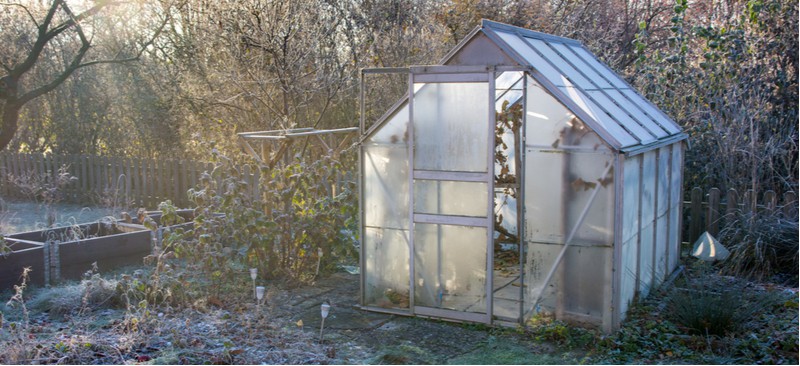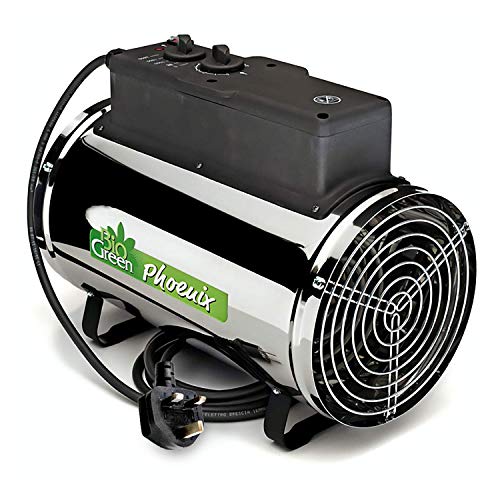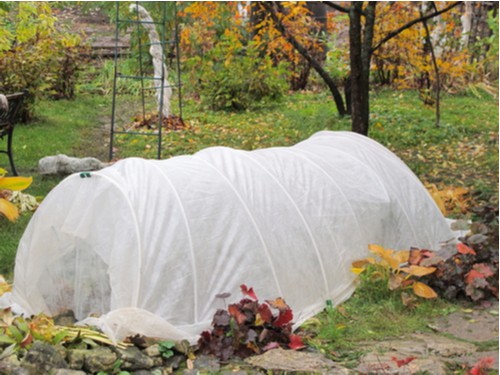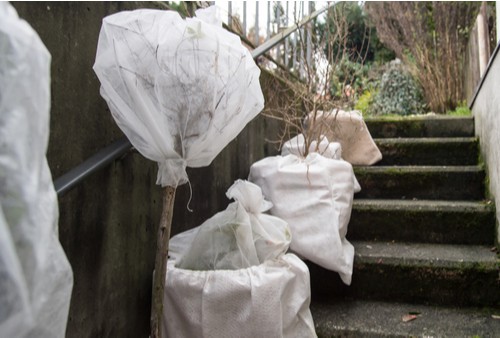Last updated on March 24th, 2022
Our site is reader supported, this means we may earn a small commission from Amazon and other affiliates when you buy through links on our site.
There are container-grown plants, tender perennials, even specimen trees that can be damaged when a heavy frost presents itself. However, there are ways that you can protect your plants from damage in the winter so that they survive and you can prolong the harvest of the plants you have worked so hard to cultivate.
Remove snow from shrubs, trees and hedges to avoid broken branches
The first step is to physically remove the snow before it has a chance to freeze. When you go outside to shovel your paths, take a brush and literally hit the snow off your plants. This will prevent your plants from sagging under the weight of the snow, something that usually leads to broken branches. If you have mound-shaped evergreen shrubs, such as hebes, hedges, specimen trees, or anything in between, knock the snow off them so that they don’t suffer irreparable damage. This is something you will have to do throughout the winter and be mindful of when it is actively snowing so that you have an opportunity to remove the snow as quickly as possible.
Heat things up and move more tender plants and pots into a greenhouse
You can also protect your plants in the winter by literally heating them up with a paraffin heater, or simply moving them into a cold greenhouse as it will often be a few degrees warmer in there. Inside your greenhouse, you can line the structure with bubble wrap as shown in this guide and then integrate a good green heater for the most tender of your plants.

You can even use horticultural fleece or bubble wrap to create partitions or curtains dividing those plants that need to keep warm the most. Hang the fleece or the bubble wrap from the roof of your greenhouse and allow it to rest against the floor, then seal off the edges with tape so that you can focus the heater where it is needed most, keeping that small space heated, without breaking the bank in the process.
You can learn more about how to heat a greenhouse in this guide  Biogreen PHX 2.8/GB Phoenix Electric Fan Heater available from Amazon.co.uk
Biogreen PHX 2.8/GB Phoenix Electric Fan Heater available from Amazon.co.uk
You can see some of our top recommended greenhouse heaters in this review
Give your plants some cover with fleece and mini poly tunnels
Another way to protect your plants in the winter is to simply give them a cover. If you have root crops like carrots or parsnips you can place a blanket of straw on top of them so that the ground itself doesn’t freeze. Doing this will help you to harvest later in the autumn when it’s appropriate, without having the issue of an early frost damaging your harvest. You can also buy miniature tunnels made from fleece or clear plastic.

Bring tender plants grown in pots indoors
You can also give them a figurative cover by moving them into a frost-free area like a heated greenhouse (as already mentioned) or a windowsill that faces south. This is particularly important for things like tender succulents such as aeoniums or aloe plants.
Wrap potted plants in fleece and pots in bubble wrap
If you have potted plants you should wrap the entire pot with bubble wrap or horticultural fleece. Secure the wrapping in place and allow it to remain throughout the whole of winter. This will prevent the roots from freezing inside the container. If possible ground them together and move them into a more sheltered area of the garden.

Don’t forget about the lawn
If you have a lawn, try not to walk on it in the winter, especially when the snow or frost blankets it. The more you walk across your lawn, the more likely you will damage the blades and break them with each step you take. Walking across a frozen lawn can also exacerbate compaction, which increases the risk of drainage issues and fungal diseases.
You can learn more about winter lawn care in this guide
Doing these simple things every winter can protect your lawn, your rooted plants out in the garden, even your container-grown plants.


